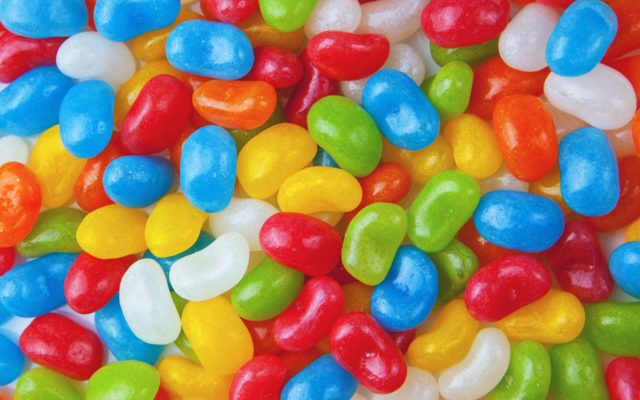Data science and big data, in general, are changing the world around us. Some of the more prominent industries where data is making an impact include retail, customer service, and construction, as well as manufacturing and development.
It’s no secret that these days, just about everything relies on a digital component — and digital platforms collect, generate and transmit data.
Every so often, however, data applications come as a surprise not regarding their adoption, but how they impact the greater world. That’s precisely the case in food and beverage, as data is fundamentally reshaping the way we eat, drink and sometimes even cook.
What Is Data Science Doing in Food and Beverage?
Believe it or not, many restaurants and food providers are tapping into data analytics to design their inventory, improve quality control and meet changing demands. As restaurants phase out meals on an old menu and add to a new one, they can tap into behavioural data, for example, to create a dish that will be popular among their customers. Some data science tools even shape the creation of new offerings by identifying ingredients, spices, and garnishments based on customer satisfaction levels.
But this is just one example of the data-driven processes and technologies that are taking hold in the industry.
1. Modern Food Deliveries: Better, Faster and More Accurate
In the past, only a handful of food and restaurant providers would deliver — pizza being the obvious go-to. That’s changed considerably in recent years, thanks to modern technologies such as mobile apps and, yes, data analytics.
Believe it or not, logistics factor heavily into proper and accurate delivery, especially when it concerns hot foods that must remain fresh during transport. Restaurateurs can use data to track elements such as traffic, weather, local climates, routes and varying factors — such as construction or detours — for delivery drivers. But it also comes in handy in the ordering and preparation of such foods. One only need to look toward popular online and mobile restaurant services from favorites like Chili’s, McDonald’s, Taco Bell and many others.
AI and machine learning can help improve existing processes by analyzing patterns and either calculating or predicting crucial delivery and preparation strategies.
2. Data-Driven Menu and Meal Creation
Even without polling consumers directly, platforms such as social media and mobile applications allow companies to build an accurate profile of their customers. Restaurant owners can use this information to decide what to add or remove from their menu, what specials to offer and even what times or days are the most lucrative.
Strategic use of data alongside a sentiment analysis tool or system allows businesses to get a deeper understanding of their brand, restaurants, and foods.
3. Self-Serve Opportunities
In some restaurants and beverage centers, it’s possible to arrange self-serve stations. Self-serve taps and bars are on the rise, allowing customers to pour their own beer.
This trend relies on the use of RFID tags or technologies to measure what customers are doing, as well as innovative payment solutions to allow customers to pay for their experience in new ways. Think not just mobile and app payments, but self-checkout systems, too.
Self-serve beer has the benefit of boosting revenue and performance, especially in traditional settings where customers would otherwise have to wait for a bartender to pour them a new drink. Instead, they can get themselves a fresh beverage whenever they’re ready.
4. Mobile Experiences
Imagine browsing the menu for a restaurant and choosing a reservation time via a mobile app. When you arrive for your meal, you can then order your food and pay with your mobile device. This scenario is 100 percent possible and already exists in some cases.
It’s not that traditional dining and wait-services experiences will go away, but will instead benefit from modern, high-tech solutions. Take McDonald’s, for example, as a basic idea of how it might work. You can still dine in the restaurant or experience conventional drive-thru service where you order on an intercom. But you can also do all the above via a mobile app. You can order your meal, move through the drive-thru or park in a designated lot space. With the latter, a restaurant employee will bring your order out to you when it’s ready.
Mobile ordering and payment provides several more choices for customers, allowing them to decide how, when and where they want to get their meals and orders.
5. Better Supply Chain Transparency
Today, customers care about where businesses and restaurants source their food and supplies. Do brands use hygienic, environmentally friendly suppliers? Are the animal handlers cruel or more humane about their practices? Are food ingredients fresh?
Data analytics and data systems allow businesses to be much more transparent about their entire operation, which, in turn, breeds greater customer loyalty. More importantly, it offers many new solutions regarding efficiency and performance. Businesses can handle an ingredient or item shortage, for example, when they see it coming, using insights they gather from data analytics.
Even better, greater transparency means improved security and health for all. Companies can track contaminated foods or meats from their source all the way to businesses that currently have them in storage, eliminating the risk of spreading foodborne illness and disease.
The Future of Food and Beverage Is Data-Oriented
Of course, the solutions discussed here are just a brief glimpse of what can and will revolutionize the industry in years to come. As digital and data-oriented technology becomes more commonplace, so will processes and strategies that thrive on its use. Rapid evolution means many opportunities and innovations that don’t currently exist will become a reality soon. It’s a world of endless possibility, and that can only mean better food, better service and excellent experiences for the rest of us.
Article by channel:
Everything you need to know about Digital Transformation
The best articles, news and events direct to your inbox









